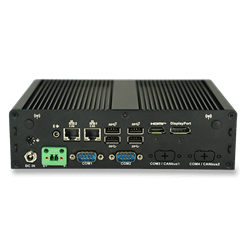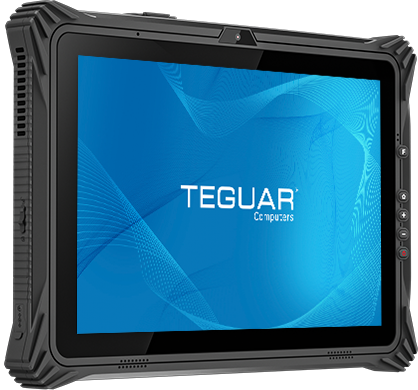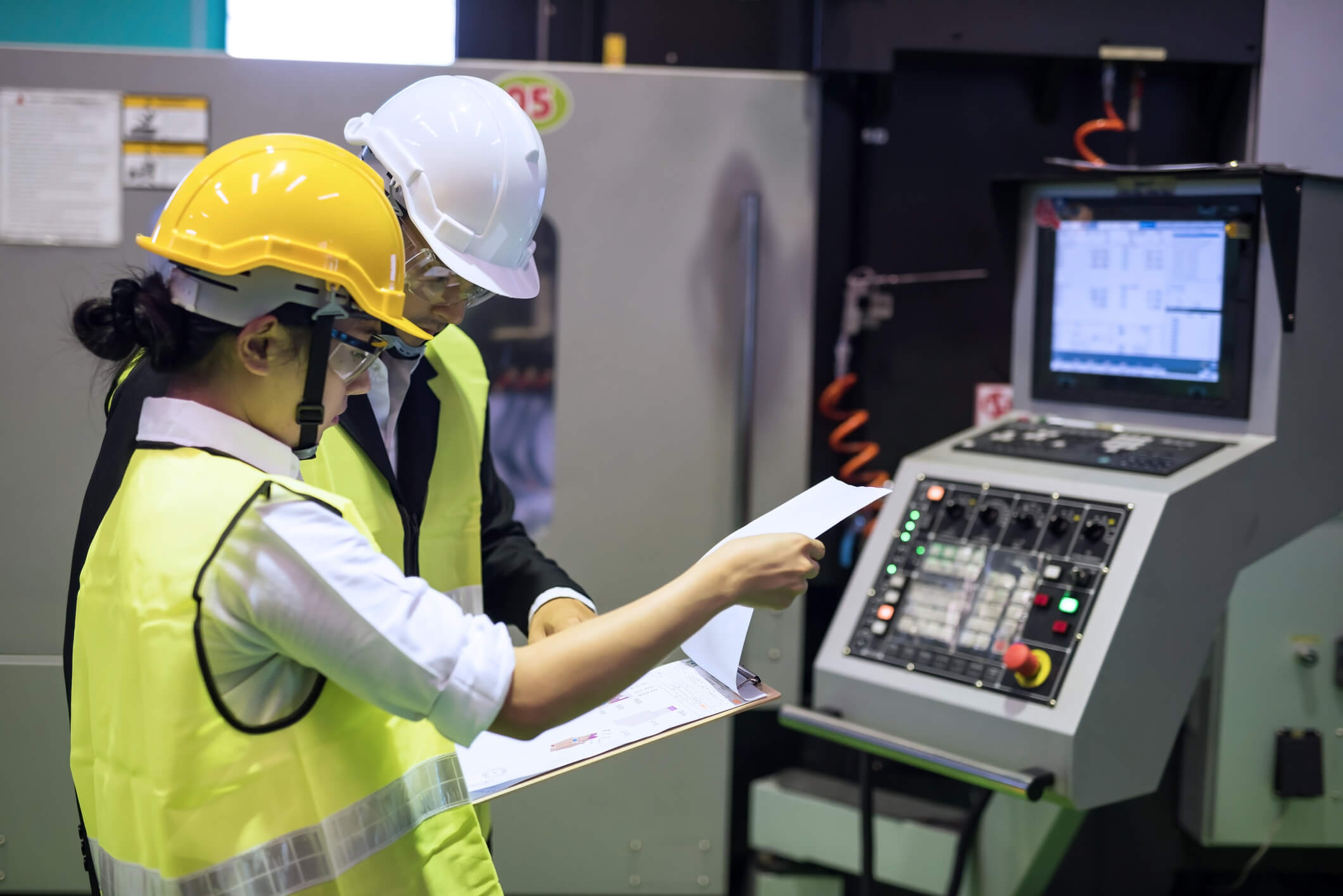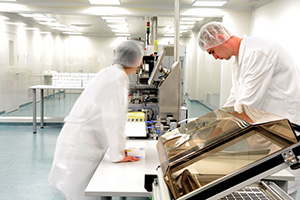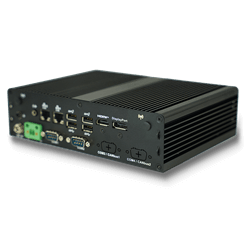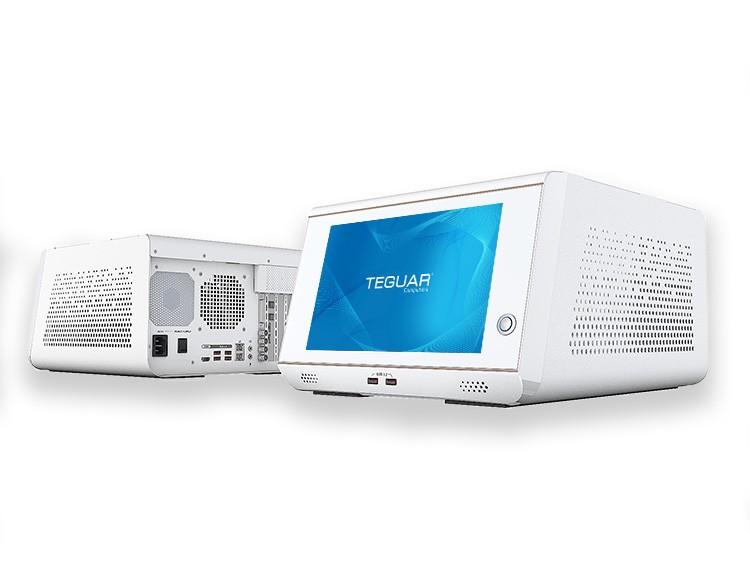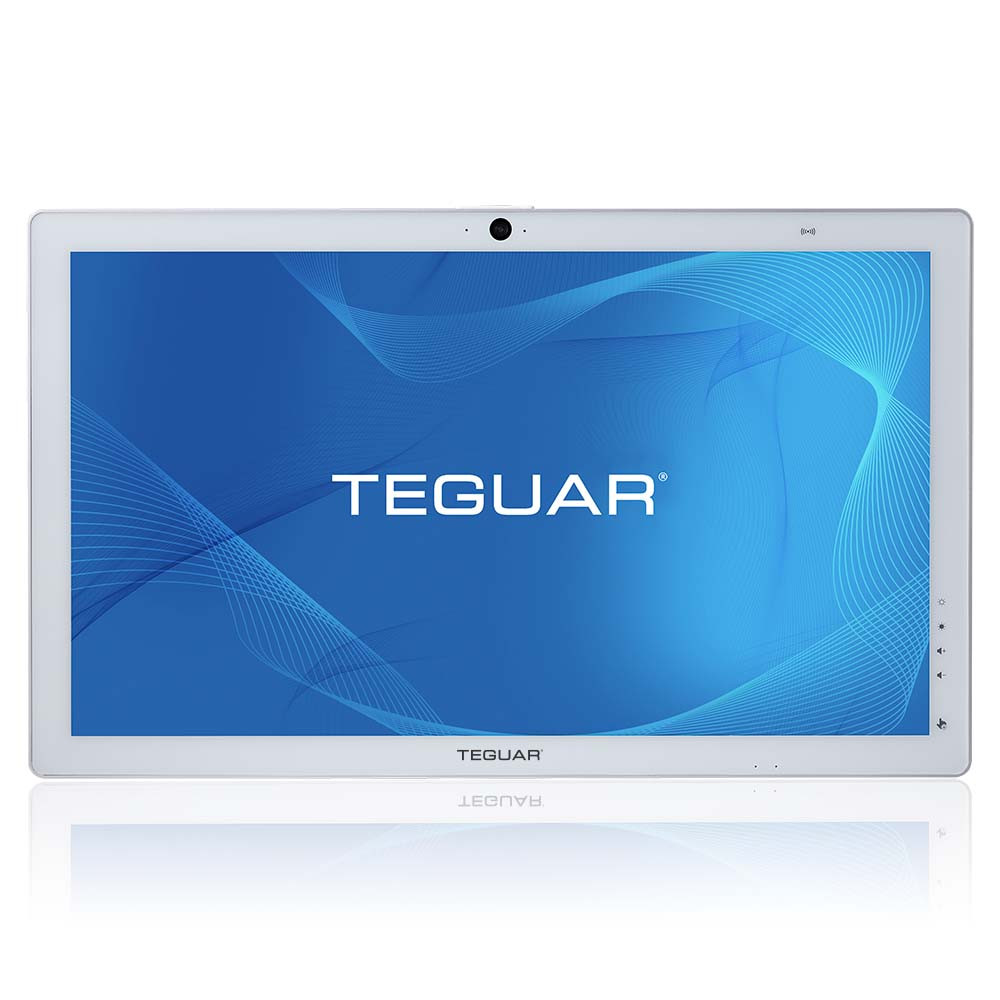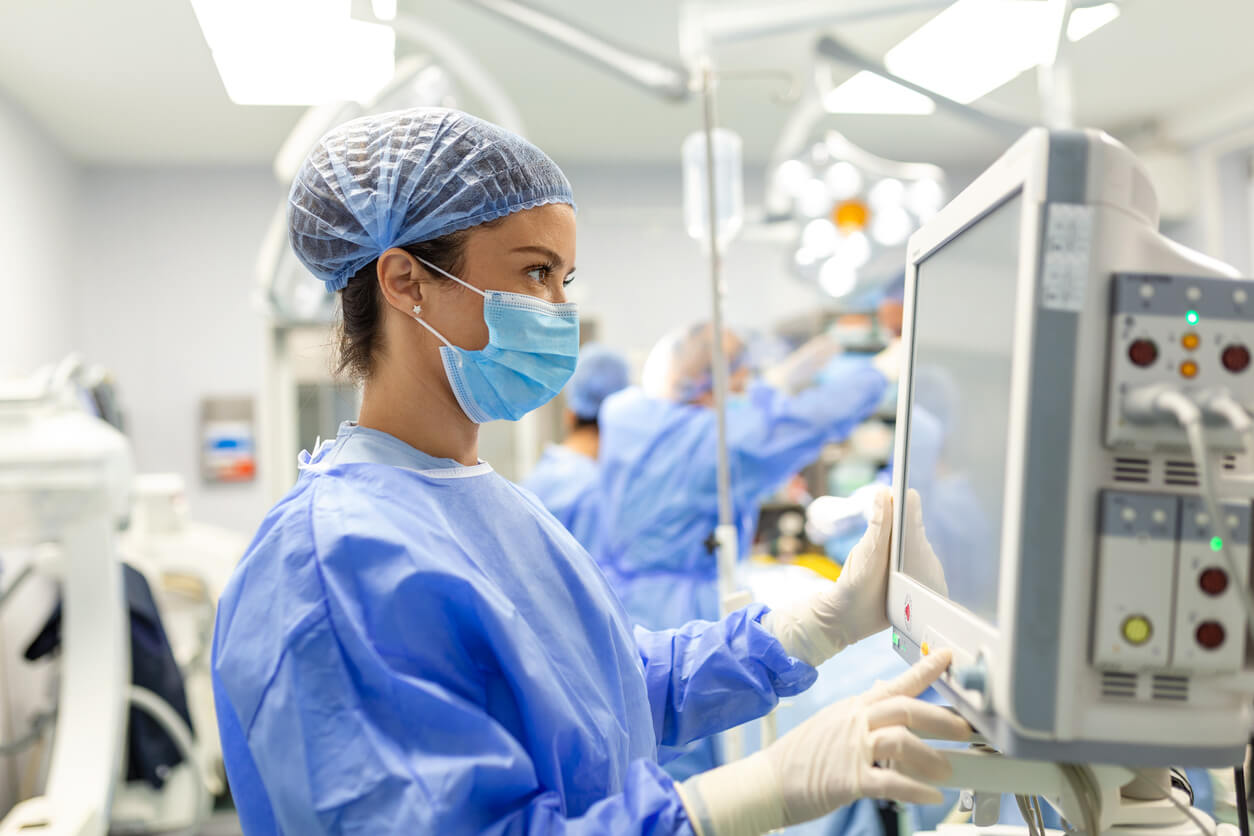What is an Embedded System?
An embedded system is a specialized embedded computer system that serves a dedicated function within a larger mechanical or electronic system. This computing system integrates some combination of processor, memory, I/Os, and software to perform its specific purpose. It can work independently or as a component of a larger system.
Types of Embedded Systems
There are four primary ways to classify an embedded system. Systems may fall into more than one type.
Network System
A network embedded system connects to a wired or wireless network to communicate with other systems. Leveraging this network, it uses a web server to provide outputs to other devices.

Standalone System
A standalone system receives analog inputs or digital signals in lieu of needing a host system. This makes it an independent system that can function on its own. Though it is not reliant on an input device, some standalone systems may have a connected output device.
Real Time System
For strict timelines or situations where reaction timing is critical, a real-time embedded system is best. A real-time system performs its designated function or delivers a specific output in a defined time interval. This can be either a regular measured time interval (i.e., to deliver x output every 60 minutes) or with an instant response to an input (i.e., if x input is registered, perform function immediately). A real-time system can prioritize its workload and devote more compute power to the time-based task performance before anything else, ensuring reliable response.
Mobile System
As the name suggests, a mobile system is designed to be portable. This means they are usually small in size and operate independently from other systems. All mobile systems are also Standalone Systems, though not every standalone system is mobile.
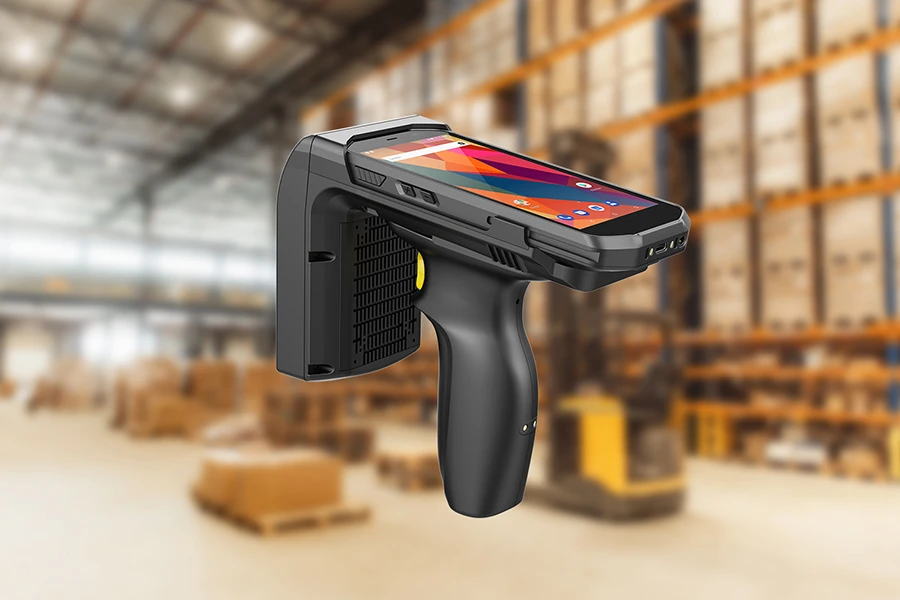
Examples of Embedded Systems
The table below lists mechanical or electronic systems that contain or are controlled by embedded systems.
| NETWORK | STANDALONE | REAL TIME | MOBILE |
| Building Security System | Mobile Phone (contains multiple embedded systems) | Medical Patient Monitor | Warehouse Barcode Scanner |
| P.O.S. System | Washing Machine | Traffic Light | Smart/Fitness Watch |
| Automated Teller Machine (ATM) | Video game console | Aircraft controls | Camera |
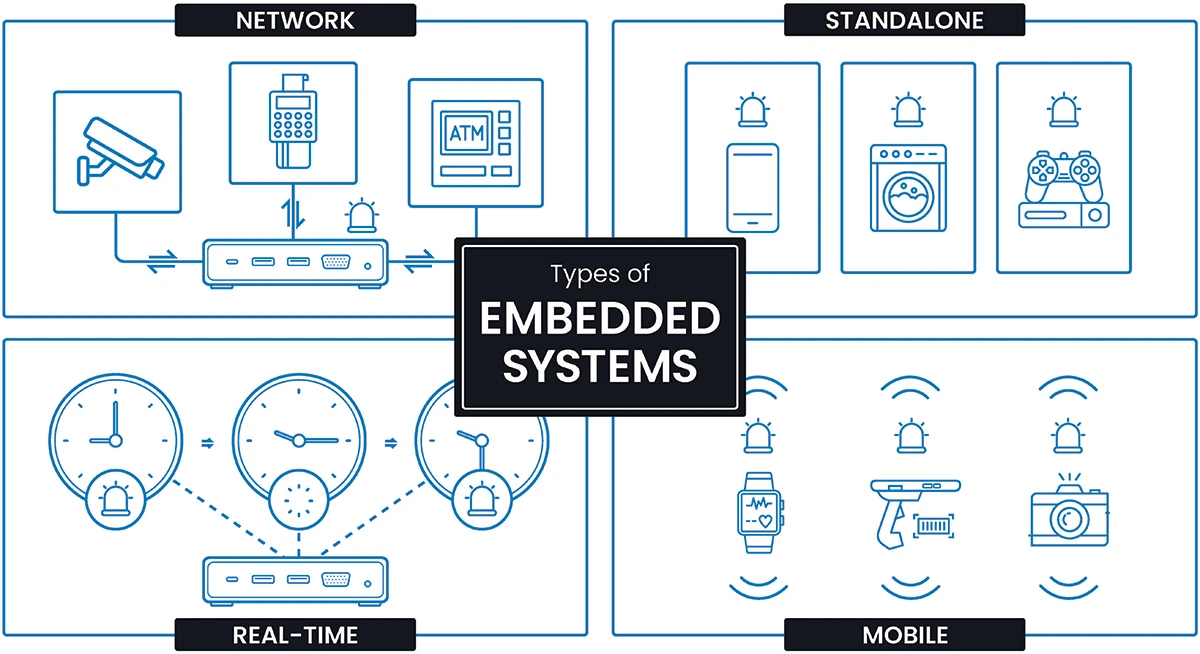
What are the benefits of an Embedded System?
Compact: In many cases, the high level of specialization means an embedded system is small. With only exactly as many I/Os, etc., as needed for a specific task, an embedded system often ends up being more compact than an all-purpose embedded computer. This is crucial in complex systems or tight spaces where every inch of real estate matters.
Fast Timing: The task prioritization in an embedded system provides enhanced real-time performance. Focusing on a narrow set of outputs enables the computer to provide a strong response time.
Specialized: Embedded systems are typically designed from the start to fulfill only their intended purpose. Designers will customize these computing systems to the exact specifications needed for even the most niche applications.
Efficiency: With all components pared down, the highly custom embedded system is optimized to operate only on the programmed output. An all-purpose embedded computer may draw more power or process at a higher level than needed, resulting in excess energy expenditure. An embedded system eliminates the need for any wasted power and draws only what’s needed for an efficient solution.
Independence: Standalone systems that operate with analog or digital inputs can continue to perform their functions even in a loss of network connection or under other failures that would otherwise interfere with computing.

What are some potential challenges with Embedded Systems?
Narrow use-cases: Because of how specialized an embedded system is designed to be, it leaves little room for additional uses beyond its intended purposes. This makes it difficult to repurpose the system if your computing needs ever evolve or change.
- Manufacturers that offer long-life support, like Teguar, can help when computing needs evolve. A Refresh Program can help when an adjustment is needed. We can make modifications to your existing hardware or provide a drop-in product to seamlessly take the old one’s place.
Availability: Embedded systems usually run long lead times due to overseas production and the highly custom nature of the systems. If you’re in a bind and need something fast, chances are slim that the exact system to meet your needs will be available with a short turnaround.
- For faster availability, consider a U.S.-based supplier with a full warehouse in the States. Teguar’s Headquarters in Charlotte, N.C. works with inventory in-house to configure and ship your embedded computer within 5-10 days.
Build your Embedded System with Teguar
Check out our fanless embedded pc and our low power all-in-ones, perfect for integrating into your industrial systems! For a specialized solution tailored to your needs, get to know our experienced Custom Product Group.



